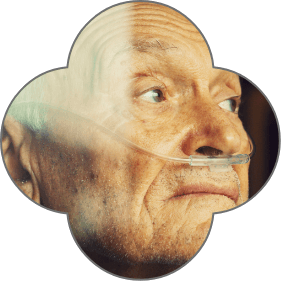Home / Our Focus
Home / Our Focus
Exposure to solar radiation is a leading factor in the development of skin cancer. This means that for many people it’s preventable and this is the motivation behind the Light Skin Science project. CLINUVEL has dedicated 25 years to research and development, using pioneering technology to change the lives and futures of people living with rare, light-intolerant conditions.
Now CLINUVEL is translating the science of light so that it’s accessible for all. Everyone needs to know how to protect themselves from solar radiation, but for some high-risk communities, it is vital.
In our mission to reduce worldwide skin cancer rates, we’re focussing first on those most at risk.
Exposure to solar radiation is a leading factor in the development of skin cancer. This means that for many people it’s preventable and this is the motivation behind the Light Skin Science project. CLINUVEL has dedicated 25 years to research and development, using pioneering technology to change the lives and futures of people living with rare, light-intolerant conditions.
Now CLINUVEL is translating the science of light so that it’s accessible for all. Everyone needs to know how to protect themselves from solar radiation, but for some high-risk communities, it is vital.
In our mission to reduce worldwide skin cancer rates, we’re focussing first on those most at risk.
The sun’s UV rays suppress our immune system in several ways, so people who are already immunocompromised unfortunately have a higher chance of developing skin malignancies.
Cancer in these patients is also frequently aggressive and more likely to reoccur.
However, awareness and behaviour change can redress this balance, helping those with a weakened immune system live fuller, healthier lives.
A personal or family history of skin cancer means that you are at a much higher risk of developing a first or subsequent skin cancer.
However, this knowledge is empowering and can be turned into positive action. People in this community can take easy and effective steps to protect their skin from light, shifting their behaviour towards solar protection, and paying particular attention to any noticeable skin changes.
For people who love the outdoors, it’s not just a hobby; it’s a way of life.
The mental and physical benefits of sun exposure are well-documented, but the constant assault of solar radiation on human skin significantly increases the chances of developing skin cancer. For people in this community, taking responsibility for skin health is vital, by acknowledging the risks of solar damage, and taking steps to counteract them.



Your skin is your largest organ. It’s a resilient home to millions of protective bacteria and the only physical barrier between you and the outside world. However, its daily defence from the elements, particularly light, takes its toll. Your skin is doing a fantastic job of protecting you, but how well are you returning the favour?

Your individual tolerance to solar exposure and subsequent skin damage depends on several factors, including your genetics, lifestyle and overall health. Your body has a built-in repair mechanism for damaged skin cells, but where skin is overexposed to both UV and HEV light, this mechanism becomes overwhelmed and impaired. This leaves the cells vulnerable.
Overexposure to solar radiation is a key risk factor in developing skin cancer. The solar damage starts chemical reactions within our skin cells, altering DNA and causing mutations. Repeated and prolonged exposure to solar radiation can result in permanent mutations which can then replicate.
The out-of-control replication of these damaged, mutated cells is skin cancer. The three most common types are basal cell carcinoma (BCC), squamous cell carcinoma (SCC), and melanoma.
In each one, overexposure to the sun is an important predictive factor.